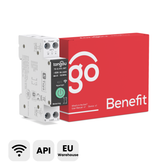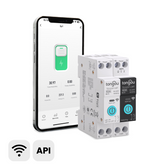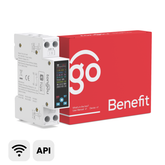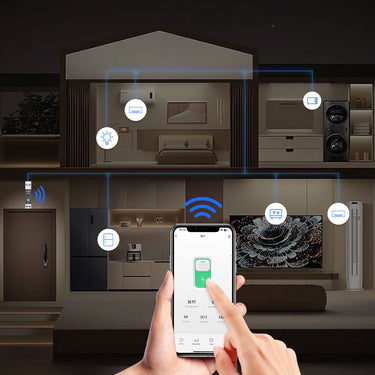How Often Do a Circuit Breaker Go Bad?

In the modern home, we often take electricity for granted. Flipping a switch brings instant light, and plugging in appliances provides the power we need for daily life. But behind the scenes, a critical safety device is working tirelessly to protect your home and family from electrical hazards: the circuit breaker. These unsung heroes of electrical systems are designed to prevent overloads and short circuits, cutting off power when danger arises. But like all mechanical and electrical components, circuit breakers are not immortal.
It's a common misconception that circuit breakers last indefinitely. While they are built for longevity, they do have a lifespan, and understanding the factors that influence their reliability is paramount for ensuring electrical safety in your home or building. This article will delve into the lifespan of circuit breakers, explore the telltale signs of a failing unit, and provide essential maintenance tips to maximize their life and, most importantly, safeguard your electrical system. Whether you are a homeowner in London, a property manager in Berlin, or a business owner in Paris, understanding circuit breaker reliability is a key aspect of electrical safety in any European home or business.
This guide will focus specifically on the types of circuit breakers, like Miniature Circuit Breakers (MCBs), that are standard in European homes and businesses, adhering to IEC (International Electrotechnical Commission) regulations.

What is a Circuit Breaker and How Does it Work? The Guardian of Your Electrical System
Before we discuss lifespan and failure, it's important to understand the fundamental function of a circuit breaker. Simply put, a circuit breaker is an automatic electrical switch designed to protect an electrical circuit from damage caused by excess current from an overload or short circuit. It acts as a crucial safety device, preventing overheating, electrical fires, and damage to appliances and wiring.
Imagine your electrical wiring as a network of roads carrying electrical current, the "traffic" of electricity. Each circuit is designed to handle a specific amount of traffic, or amperage. A circuit breaker is like a traffic controller on these roads. When the current flow exceeds the safe limit for that circuit – perhaps due to too many appliances plugged in at once (overload) or a fault in the wiring (short circuit) – the circuit breaker "trips," interrupting the flow of electricity.
Inside a typical Miniature Circuit Breaker (MCB), commonly found in European homes, there are two primary mechanisms that trigger this tripping action:
- Thermal Trip: This mechanism responds to overloads. Excess current flowing through a bimetallic strip inside the breaker causes it to heat up and bend. When it bends sufficiently, it triggers a mechanism that opens the circuit, breaking the electrical flow. This type of trip is slower and designed for sustained overcurrent situations.
- Magnetic Trip: This mechanism reacts to short circuits. A sudden surge of very high current, as in a short circuit, creates a strong magnetic field in a solenoid within the breaker. This magnetic force instantly trips the breaker, providing a very rapid response to dangerous fault currents.
This dual-trip system is the engineering heart of a modern MCB, providing a nuanced response to different types of faults.
By combining these thermal and magnetic trip mechanisms, circuit breakers offer comprehensive protection against a range of electrical faults, making them an indispensable component of modern electrical installations throughout Europe, adhering to standards like IEC 60898 for household circuit breakers. They are far superior to older fuse systems, as they can be easily reset after tripping, restoring power once the fault is resolved, unlike fuses which need to be replaced.
Factors Influencing Circuit Breaker Lifespan: More Than Just Time
|
Factor |
Impact on Lifespan & Reliability |
|
Initial Quality |
High-quality breakers from reputable manufacturers like TONGOU, conforming to IEC standards, use superior materials and undergo rigorous testing, ensuring a longer, more reliable service life. |
|
Installation Quality |
Improper installation, especially loose connections, is a primary cause of failure. It creates localized overheating, which stresses and damages the breaker's internal components over time. Professional installation is key. |
|
Environment |
High heat, excessive humidity, and dust can all accelerate aging. Humidity leads to corrosion, while heat and dust can affect the calibration of the sensitive thermal trip mechanism. |
|
Electrical Load |
Circuits that are consistently running near their maximum load put continuous thermal stress on the breaker, even without tripping. This constant heat contributes to long-term degradation. |
|
Frequency of Tripping |
Each trip, whether from an overload or a short circuit, causes minor mechanical wear and a thermal shock. Frequent tripping significantly shortens a breaker's life and indicates an underlying problem that needs to be fixed. |
|
Maintenance |
Lack of maintenance allows issues like dust accumulation and the loosening of terminal connections (due to thermal cycles) to go unchecked, leading to premature failure. |
For Property and Facility Managers: For multi-tenant buildings or commercial facilities, a proactive circuit breaker maintenance schedule is not just a best practice—it's a crucial part of risk management. A single failure can lead to operational downtime, lost revenue, and tenant dissatisfaction. Implementing a regular inspection and testing plan, as part of a larger preventative maintenance strategy, is a wise investment in the building's operational integrity.
Signs of a Failing Circuit Breaker: Recognizing the Warning Signals
Knowing the signs of a failing breaker is crucial for proactive safety. Be alert to these warning signals, ranging from cautionary to critical.
⚠️ CAUTION: Investigate Soon
-
Frequent Tripping: If a breaker trips regularly without any new appliances being added, it may be becoming overly sensitive or failing. Don't just keep resetting it; investigate the cause.
-
Flickering Lights: While it can have many causes, intermittent flickering on a single circuit can sometimes point to a loose internal connection within the breaker.
-
Failure to Reset: If a breaker trips and will not reset, even after unplugging all devices on the circuit, it has likely failed internally and needs immediate replacement.
🚨 DANGER: Immediate Professional Attention Required
-
Hot to the Touch: A breaker that is abnormally hot (significantly warmer than others) indicates a serious internal problem or a poor connection that is generating dangerous heat.
-
Visible Damage: Look for cracks in the housing, melted plastic, or scorch marks. These are clear signs of severe overheating.
-
Burning Smell: A distinct smell of burning plastic or ozone from your electrical panel is a critical emergency signal. It indicates an active and dangerous overheating situation.
🔥 EMERGENCY: Evacuate and Call for Help
-
If you see smoke or sparks from the panel, or hear a loud buzzing or crackling sound, do not hesitate. Evacuate the area, call your emergency services, and then a qualified electrician.
The Next Generation of Protection: Smart Circuit Breakers
Traditionally, diagnosing a circuit breaker has been a reactive process—waiting for a problem to occur. But what if your circuit breaker could tell you it was having a problem before it failed? This is the power of modern Smart Circuit Breakers.
Smart MCBs and RCBOs, like those available from TONGOU, integrate intelligence directly into the protective device. This transforms them from a simple safety switch into a proactive diagnostic tool.
-
Remote Monitoring: A smart breaker allows you to see the real-time status, voltage, and current of a circuit from your smartphone. An unusual current draw that isn't quite an overload could be an early warning sign of a failing appliance.
-
Trip Logging and Notifications: When a smart breaker trips, it doesn't just cut the power. It logs the event and sends an instant notification to your phone, often telling you why it tripped (e.g., over-current, leakage, over-voltage). This eliminates guesswork and helps you diagnose problems faster.
-
Proactive Alerts: You can set custom alerts. For example, a rule that says, "If the voltage on this circuit goes above 250V, send me a warning." This allows you to catch grid problems before they damage your equipment.
By upgrading to smart circuit breakers, you are moving from a passive safety model to an active, data-driven one, giving you unprecedented insight and control over your electrical system's health.
Conclusion: From Passive Safety to Active Intelligence
Circuit breakers are the vigilant guardians of our electrical systems. While robust, they are not immortal. Understanding the factors that affect their lifespan and recognizing the warning signs of failure are essential for every property owner.
For those looking to achieve the highest level of safety and insight, the future is intelligent. By upgrading to TONGOU Smart Circuit Breakers, you transform your electrical panel from a silent, passive safety box into an active, communicative hub that provides real-time data and proactive alerts.
Whether you are maintaining a traditional system or upgrading to a smart one, prioritizing the quality of your components is the ultimate investment in your safety and peace of mind.

→ Discover the Future of Protection with TONGOU Smart Breakers













